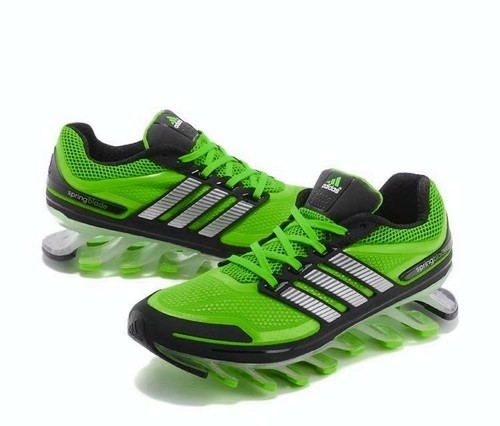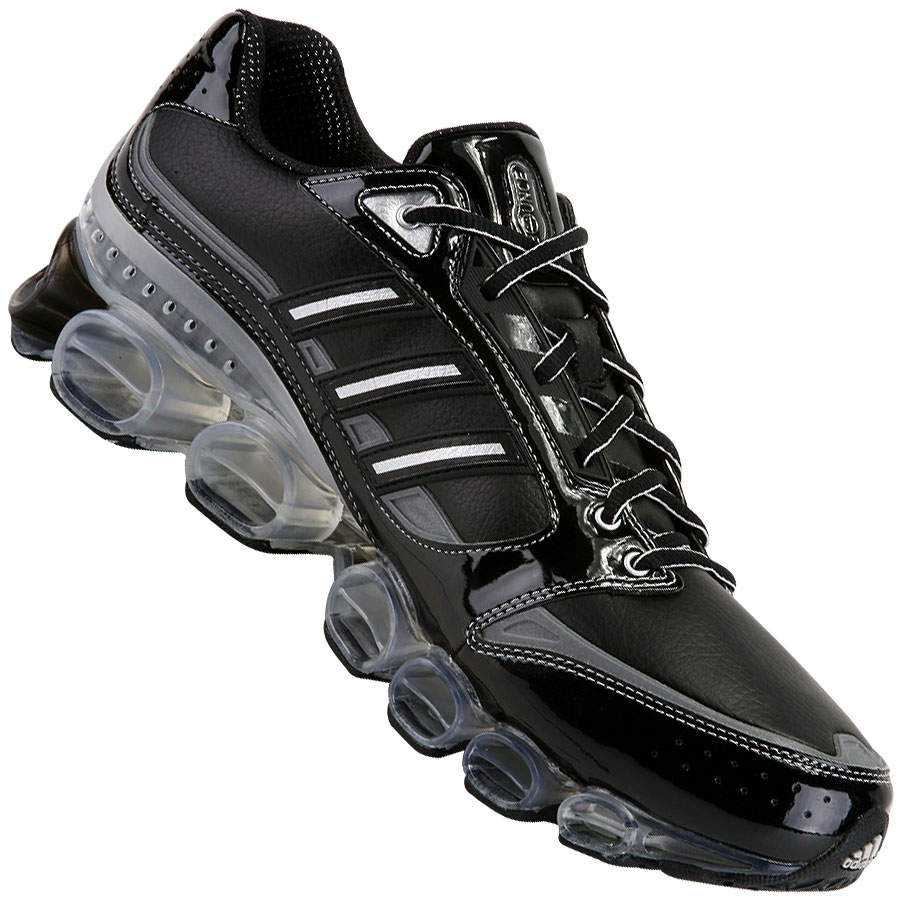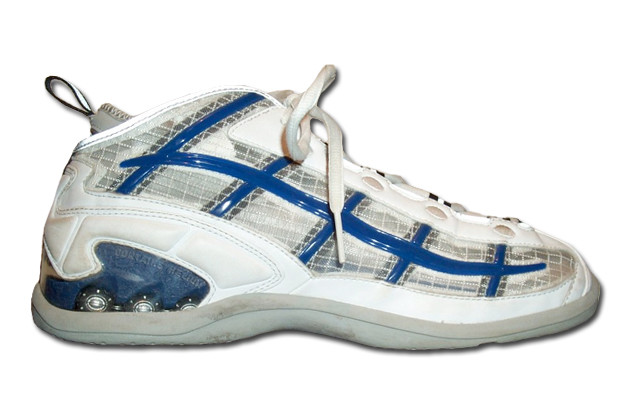Failed Trainer Technology
Innovation in the trainer world is constantly presenting itself. In a lot of cases, this innovation is positive. A technological advancement can really change the footwear landscape. We see this most notably of late with the rise of Boost technology. Allowing Adidas to leap frog the established dominance of Nike and their Air bubble technology. Naturally, not every “new toy” a footwear brand wants to showcase does innately well in the market, but many can contribute to improving a brands product portfolios on the whole. I feel like these “good ideas” get far too much publicity as it is. Instead, I want to talk about those ideas that don’t do so well. The ideas that for whatever reason fail to live up to expectations. Whether it be a problem with their promotion, style or technology itself. Here at Laced we have picked out our top 5 Failed Trainer Technology.
Adidas Springblade
Usually the creative minds at these big trainer brands become transfixed on the idea of energy return. Developing cushioning technology to infuse into their midsoles. In order to improve, for lack of a better word “spring”, seems like an on going necessity. Particularly as we think most of these technological advancements apply to running shoes. In 2013 Adidas debuted its revolutionary Springblade, a shoe with 16 curved “blades” underfoot that looked like tiny prosthetics.

Adidas claimed that the blades “instantaneously react to any environment, compressing and releasing energy to create an efficient push-off that feels like you have springs under your feet.” As to be expected, visually the Adidas Springblade definitely turned a few heads. Unfortunately for the Three Stripes however, they didn’t live up to their original expectations from a performance standpoint. Although the model did provide a forward-pushing, bouncing feel, this pro was offset drastically for runners by the con of the shoes weight. Weighing in at 13oz the shoe was some what prohibitive, while the forefoot stability is questionable given the travel of the springs as they compressed underfoot.
Nike Shox
To call the Nike Shox a failed trainer technology in my opinion is slightly harsh but perhaps not unjustified. In the early 2000s Nike Shox technology was touted as a possible success to the Air Unit. Yet although the columns in the sole did seem to perform the job they were made for, by aiding wearers through their modular “boings” that could absorb impact and spring back to give runners that added boost. The Nike Shox in the long run didn’t make the type of lasting impact the brand expected it to.

For a time in the early 2000s the world was indeed captivated by the technology. With everything inspired by Vince Carter jumping over Frederic Weis, propelled by a pair of pillared ball boots at the 2000 Summer Olympics. This ultimately stood as the most important advert for the Nike Shox. Unfortunately, it did not save it from eventual obscurity.
Nike Shox in truth probably was less of a fail and more of a forgotten technology. As technology moved on the aesthetic of the Shox models left something to be desired, and Nike moved in favour of a less clunky and more subtle cushioning systems. Sorry Shox.
Reebok Reezig
Released in 2011 the Reebok Zigtech technology for starters looked crazy. The theory behind the cushioning is that the zigzag foam sole is designed to push athletes forward. While assisting the wearer with an energy return via impact at the heel. Which then supposedly disperses the energy through the zigzag composition which propels the athlete forward and reduces impact on the shins.
All sounds like great stuff in theory, but the reality is that all cushioning technologies have a similar write up. Some of course are just more out of the box than others, and although the Reebok Reezig was marketed as an energy drink for your feet. Its wacky visual design ultimately lead to its downfall: function still has to look good at the end of the day.

Adidas Megabounce
It is slightly unfortunate Adidas have two shoes on the list, but released in 2008 the Adidas Megabounce is definitely one to forget. Potentially the precursor to what became the Adidas Springblade, the Megabounce technology was supposed to hinge on a massive amount of heel cushion that essentially made impact transfer into forward motion. Again, nothing too revolutionary in terms of the theory, but again a common theme with all these designs are the aesthetic shortcomings.
The Adidas Megabounce to me is just an awful midsole, visually. Made up of what I can only describe as intersections of bone without the marrow represented in springy rubber. Cushioning systems traditionally work best when they mesh well with the upper and go almost unnoticed. In this case, you can’t ignore the Megabounce, and it makes me feel a bit sick.

Converse Helium Technology
In 1999 Converse thought they could out do Nike. Why would Nike ever use Air? It’s so heavy, right? Well apparently Converse thought so, and that is what their Helium technology concept is built on. Not only boasting superior comfort but also a lighter overall shoe due to the inert gas’ lower atomic weight. In reality however, Nike Air was able to prove that it plays second fiddle to no one. The Converse Helium technology goes down as a failed trainer technology as its not enough to try and one up a competitor. You have to come with your own concepts. After all Converse was bought by Nike not long after, and that buried this competitor for good.

You can still find some of these retro throwbacks by searching with Laced’s online trainers platform. Because after all, they may have failed on their debut, but they still have their fans out there.
